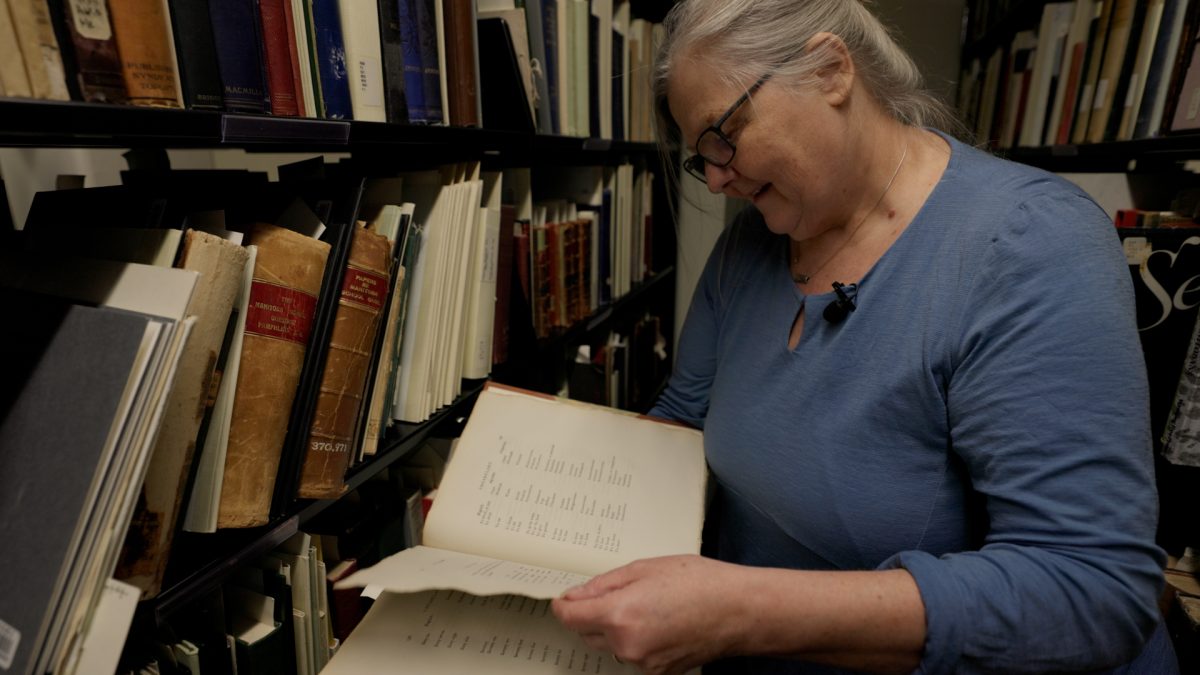
Slavery as part of Canadian history
Most histories of Canada include a description of the fur trade, where early European explorers exchanged beaver pelts and other items for information and assistance in developing the emerging colonized country.
What is not generally taught, however, is that chattel slavery – where people could be bought and sold as property – was an integral part of the fur trade in Canada.
Anne Lindsay wrote her doctoral thesis for UM’s department of history on how the Canadian fur trade reflected the violence of the French and British empires and was not as passive or innocuous as it is painted in most accounts.
She notes: “The fur trade was just as much involved in chattel slavery and the racialized constructions that supported it as the empires it was part of… From the seventeenth through the nineteenth centuries the fur trade world across northern North America experienced and saw the same sorts of violences, both symbolic and literal violences, including chattel slavery, as the empires in which it was imbricated.”
Lindsay explains: “This topic brings together a number of my greatest interests, including gaining a better picture of how race, gender, and empire played out in the fur trade, and a better understanding of the networks of relationships that connected the fur trade to its respective empires.”
She found that slavery in what would become Canada existed through complex networks of relationships with the families, the laws, the mercantile practices, and the beliefs that formed and informed these empires and the people who constituted them.
“In this context chattel slavery in the fur trade, as in the rest of empire, existed alongside other forms of unfreedom including indenture, and other forms of violence including the construction of race,” she says.
Lindsay documents many instances of unfree labour, including enslaved people working for European settlers in Canada, like Joseph Lewis. Lewis, a Black man from New England, eventually ended up working for the Hudson’s Bay Company as a chattel slave in what is now The Pas, Manitoba.
Lindsay also found that women could play a major role in slavery. Jean Wedderburn Douglas, or Lady Selkirk – the wife of Lord Selkirk – actively participated in the business of the Red River Settlement, in both the colony and the Hudson’s Bay Company’s fur trade, making independent decisions and providing advice and counsel.
Lindsay says Lady Selkirk played “an important part in planning and strategy in their business relationship, a business that was immersed in very literal violence at the time, and that would lead to the colonial violence of Indigenous land loss through what is commonly known as the Selkirk Treaty when her partner Lord Selkirk arrived at Red River.”
Historical research can be challenging at the best of times, but Lindsay found that working on her thesis during the pandemic was especially trying, having to pivot her approach to identifying sources. In addition, during the 1940s, a great many important records were lost in a fire.
She explains: “To try to piece together as much as I could from these lost sources, I tracked down notes taken by historians who had had the opportunity to research in these records before they were lost. Tracking these archives down took some months, and researching in them involved trips to Toronto, Ottawa, and Montreal, which I was able to do, thankfully, before the pandemic.”
Lindsay says that her research was both rewarding and enlightening: “My favourite part of this dissertation has been teasing out the stories, at least a little bit of them, of some enslaved people during the fur trade. Their stories give glimpses of their strength, intelligence, skills, and talents, of their agency, despite the circumstances in which they found themselves.”
Her detailed and remarkably well-researched thesis lays out in no uncertain terms that: “The fur trade carried not only chattel slaves into and out of the pays d’en haut [i.e. the fur trade territory west of Montreal], but the racialized logic, the culture of colonial violence and beliefs in colonial law that supported the symbolic and physical violences chattel slavery involved.”
Her research also earned her the 2022 Best PhD Dissertation from the Canadian Studies Network.
Lindsay hopes to continue to look into connections between the fur trade in what is today Canada, and racialized constructions that continued even after outright chattel slavery became illegal throughout the British Empire in the twentieth century. This might have implications for how Indigenous people are regarded even today.
She says: “The assumptions that underwrote unfree labour in the fur trade may have survived in settler/Indigenous interactions generally, and especially in areas such as segregated Residential Schools and health care.”
University of Manitoba Distinguished Dissertation Awards are given to graduating doctoral students who have been nominated by their faculty/college/school for a dissertation that represents a ground-breaking piece of original work. Each year, one award is offered in each of the following categories: applied sciences, health sciences, humanities, natural sciences, and social sciences. Awardees receive a $3,000 prize.






